“Excellent!” I cried. “Elementary,” said he. Can no one agree on the Aiva?
The Aiva are a provocative pair of headphones.
If you are a headphone enthusiast, you’ve likely heard of the Sendy Audio Aiva. They debuted a couple years ago to rave reviews and they quickly became the engine powering the flavor-of-the-week hype-train. Then, just as quickly, the tide changed and all the cool kids seemed to change their minds about them.
Sendy Audio clearly feels the impact of all this controversy. It’s been a unique experience dealing with the company regarding my request to review the Aiva. Sendy Audio initially contacted me to see if I had interest in trying out another pair of their headphones, but when I asked if I could review the Aiva, things took an unusual turn.
- Truly luxurious build quality, design, and materials
- Detailed and resolving sound signature
- Very comfortable
- Punchy mid-bass
- Airy upper frequencies
- Can be sharp or somewhat metallic sounding if underpowered
- Source dependant
- Female vocals can be recessed
- Unique sound signature won’t fit all tastes
The overall impression I’ve received from Sendy Audio is that they are very concerned about the tone of my review. Seemingly worried that it will not be positive. Does this indicate a lack of confidence in the Aiva? Or is it simply a case of once bitten (or criticized) and now twice shy?
To be fair, when I posted my positive first impressions regarding the Aiva’s build quality in the Headphone Audio group on Facebook, a few loons came out of the woodwork to criticize them. Did they have any experience with the Aiva? Had they heard them? Touched them? Seen them in person? Nope. But they had heard that they weren’t good.
After I recovered from a giant idiot-induced eyeroll, I was even more interested in getting to the bottom of all this mysterious hullabaloo.
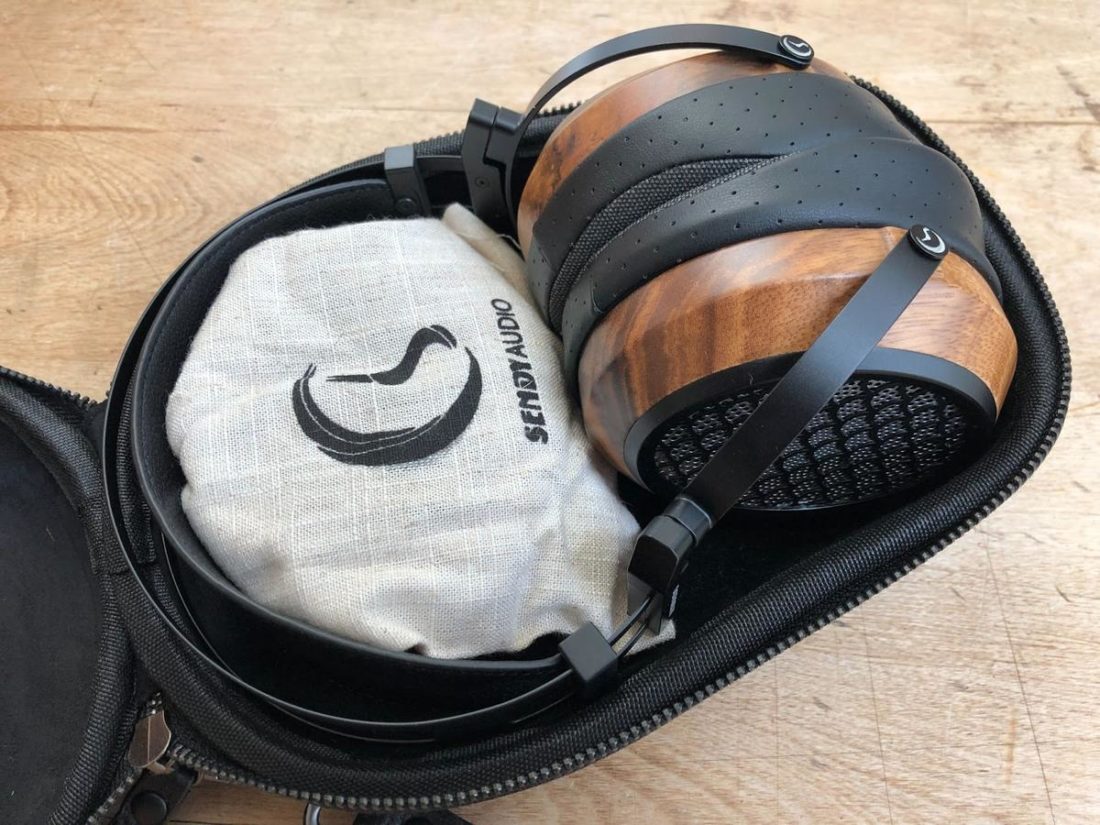
Beyond the unabashedly premium looks of the Aiva, my primary motivation for requesting to review this particular pair of headphones is their planar magnetic drivers. What makes these drivers so interesting is that they aren’t unique to the Aiva and are shared between a few manufacturers and several pairs of headphones.
I took a deep dive into the Takstar HF 580, which are the least expensive (sub-USD$200) pair of headphones to share these 76 x 97mm planar drivers. The Aiva represent the other end of the price scale and can typically be found around the $500 price point. “Several times the price for the same drivers!” the armchair critics exclaim, “they can’t possibly be worth the price!”
A headphone is more than just a list of components. The ultimate sound is a sum greater than its parts.
Part of the asking price is easily seen in the materials and build quality. The Takstar are all-plastic marvels of cost-cutting. They aren’t badly made, but they are far from luxurious. The Aiva on the other hand are a gorgeous amalgamation of wood, leather, aluminum, and steel. From the ear pads to the cable, the Aiva exude high-quality.
And all these things before we get to the significant improvements in sound quality and comfort.
Frankly, my good Dr. Watson, some things are worth paying more for.
So, without giving the whole review away in the introduction, let’s grab a magnifying glass, don a Deerstalker hat, and with our best British accents, investigate the controversial Aiva. The game is afoot!
Company Overview
Sendy Audio, founded in 2015, and located in Dongguan, Guangdong, China, is a sub-brand of Sivga Electronic Technology Co., Ltd. They are committed to small-scale building of hand-crafted wooden headphones. They refer to their planar magnetic series as ‘Black Beauty’.
“Ninety per cent of the world’s headphones are produced in China, 90 percent of China’s headphones are produced in Guangdong, and 90 percent of Guangdong’s headphones are made in Dongguan,” explains SIVGA co-founder and product chief Zhou Jian, an 18-year audio industry veteran who has done work for global brands like Sennheiser Electronic GmbH & Co, Sony and Bose.
His company is based in Dongguan because, he says: “Dongguan’s industrial chain is near perfect.” – businesstimes.com
Technical Specifications
- Form: Open-backed, over-ear
- Drivers: Planar magnetic (97 x 76 mm)
- Impedance (Ohm): 32 Ohms
- Sensitivity (dB): 96 dB
- Frequency Response (Hz): 20–40kHz
- Removable Cable: Y
- Source Jack: 4.4mm with 3.5mm adapter
- Cup/Shell Jack: 2×2.5mm
- Weight (g): 420g
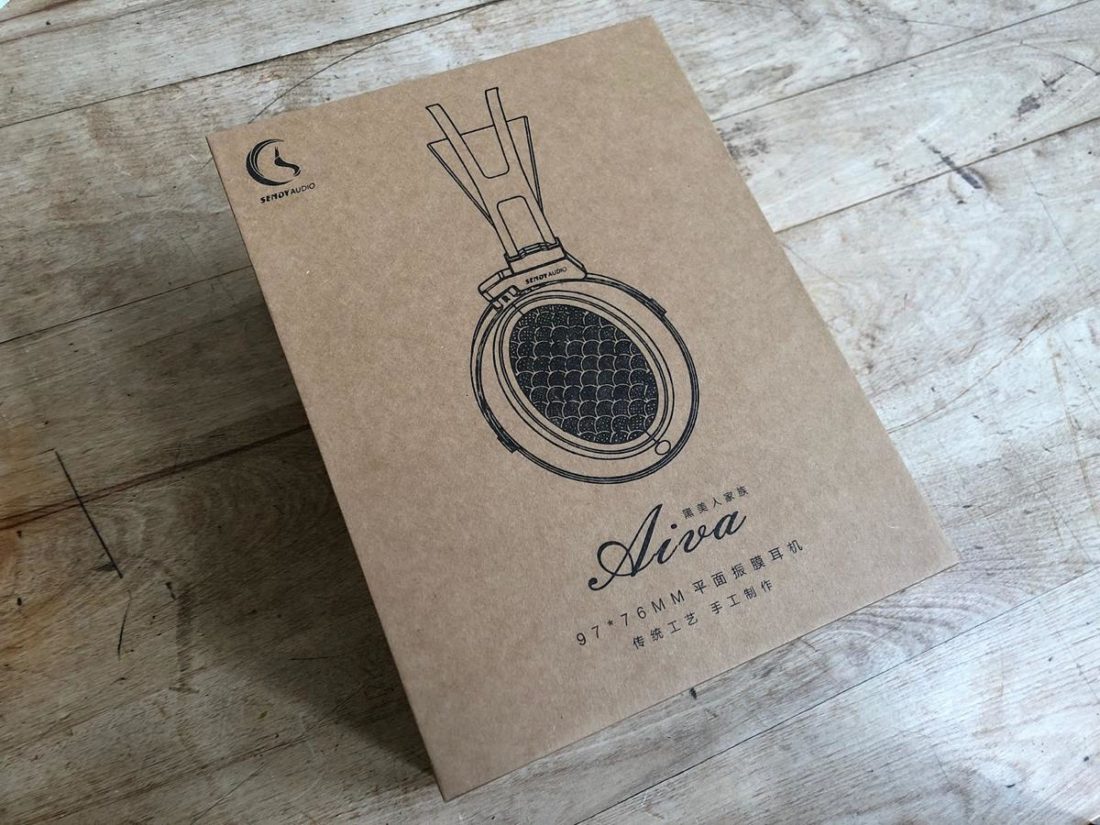
Packaging
The Aiva provide a classy experience right from the start. The environmentally-friendly brown cardboard box is adorned only with a simple line drawing of the headphones. Inside you will find the hard-case for storage and transport. The black, faux-leather case stands vertically on four small feet and is contoured to hold the headphones and cable securely inside.
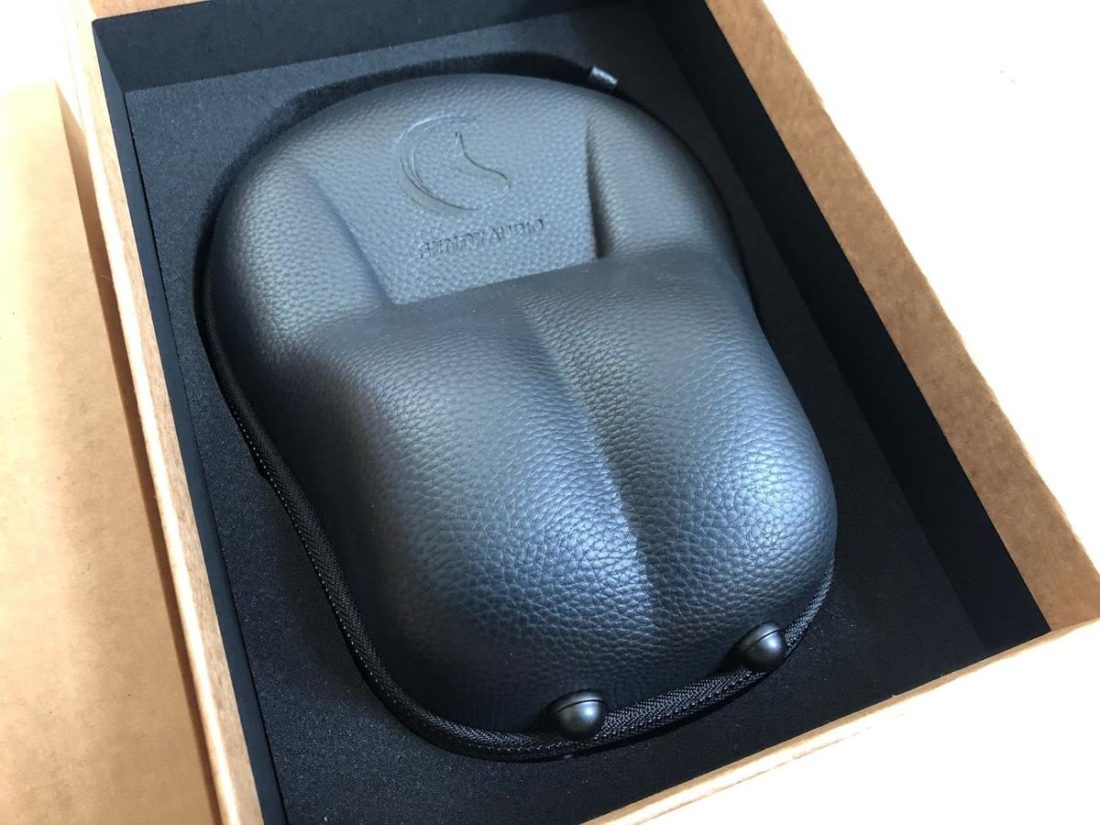
In the box
- Aiva headphones
- Storage case
- 4.4mm-to-2x 2.5mm balanced cable (160cm)
- 4.4mm-to-3.5mm adapter cable (20.5cm)
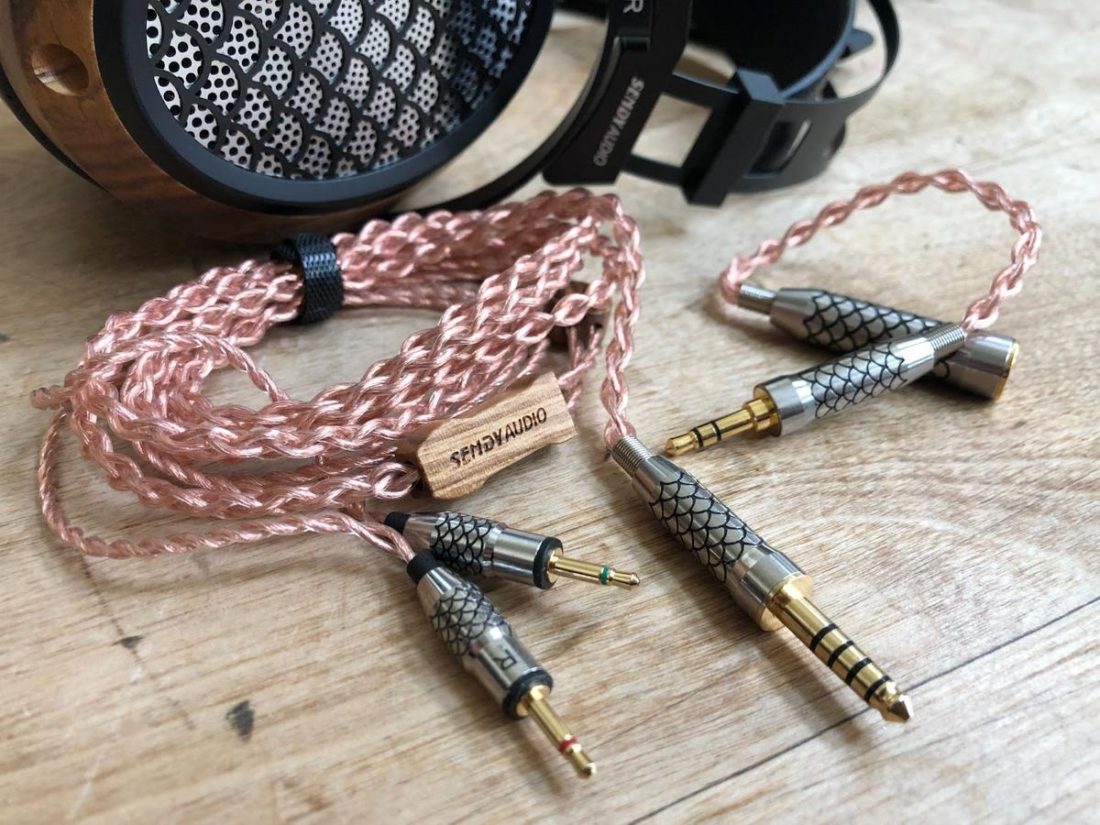
Cable
The stock Aiva cable is a gorgeous braided affair constructed of high-purity (6N) copper conductors visible within clear PET coatings. The stainless-steel plugs are especially attractive as they share the same fish-scale appearance as the cup grills. The y-split and chin slider are both constructed of zebrawood and match the cups perfectly.
The headphone jacks are recessed dual 2.5mm and the mono cable plugs snap in securely and are differentiated by L and R labelling and color-coded bands. The 4.4mm-to-3.5mm adapter cable is made to the same standards as the headphone cable.
Best of all, the cable works perfectly, is not prone to tangling, and is reasonably free from microphonics. Lovely, just lovely.
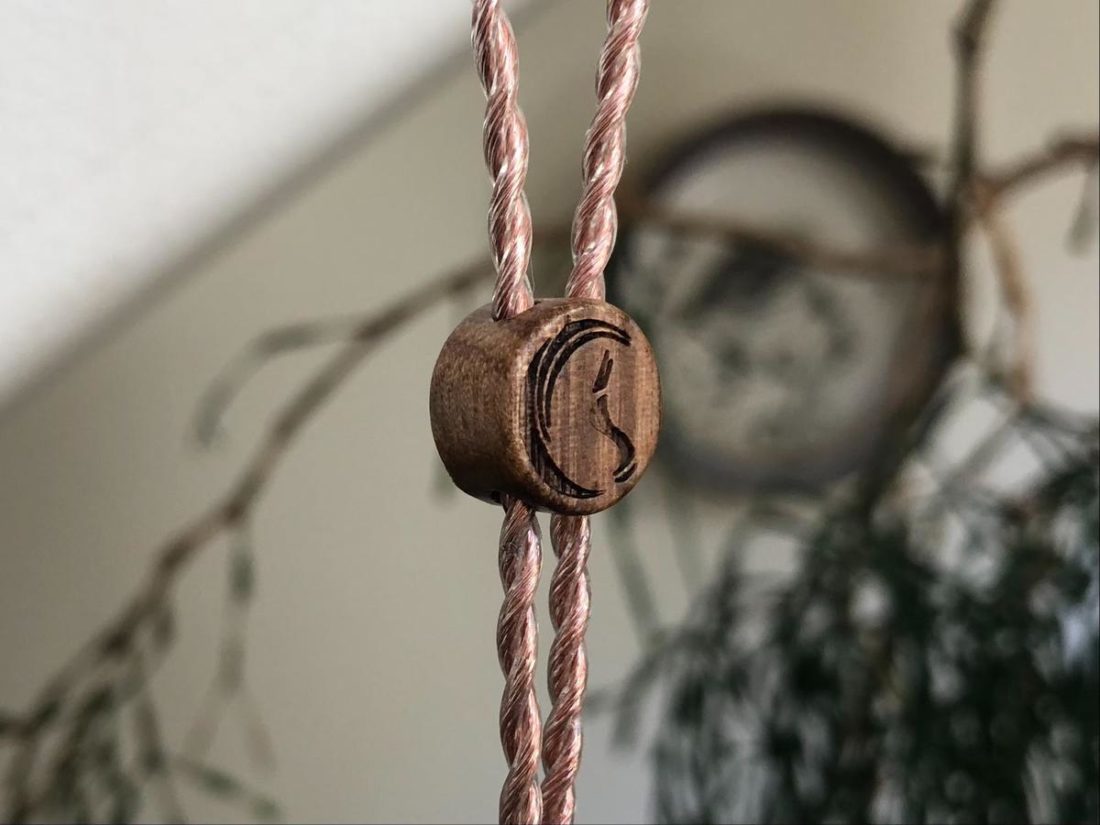
Design
You can be assured that a company that dedicates such attention to detail to a cable is going to produce an exquisite pair of headphones.
”…the metal materials of the headphone housing are made of high-end aviation aluminum materials. The housing is made of zebra wood and CNC metal parts, which has excellent sound characteristics. In addition, the fish scale shaped mesh creates a classic and luxurious design.
The whole production process consumes a lot of manpower and time, as we insist on traditional hand-made production. Due to the complex process, great difficulty in processing, long time of production and scarcity of materials, it is bound to be produced in small quantities.” – Sendy Audio
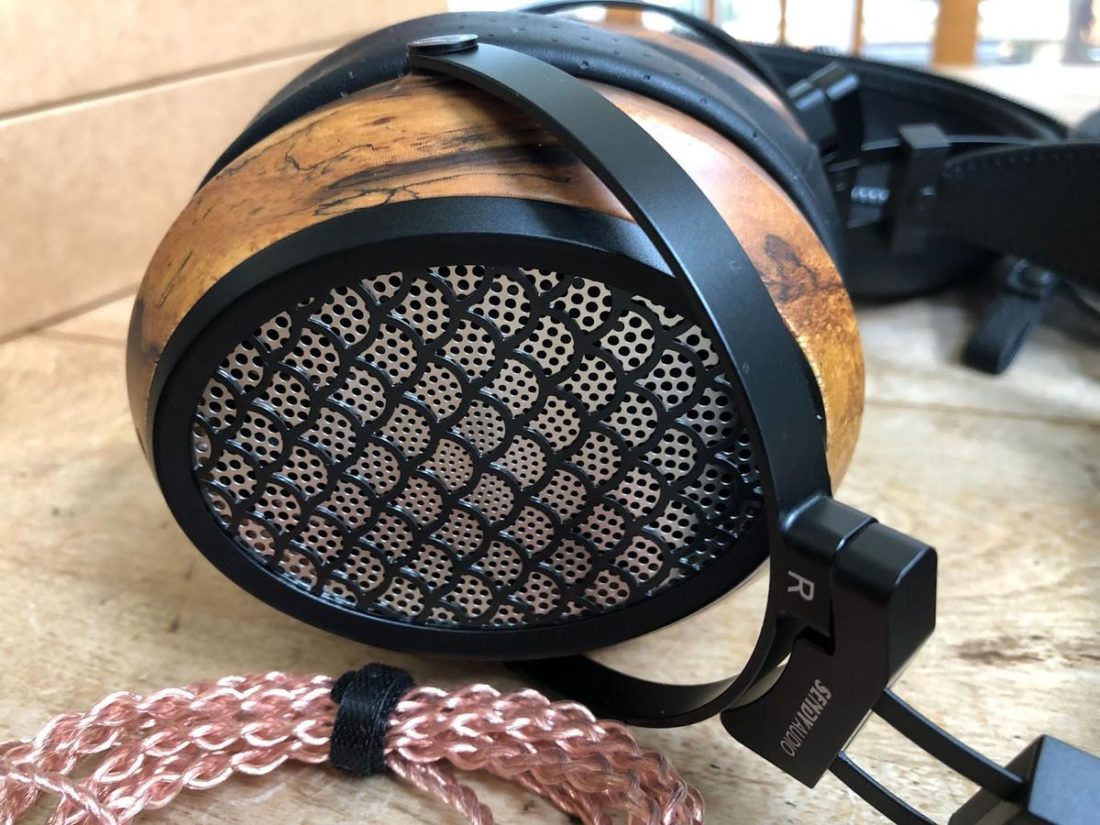
Materials and construction are top notch, regardless of price point. All surfaces are smooth and perfectly milled. Everything moves and positions with nary a creak or flex. The exceptional level of care in construction is evident.
What is even more impressive than materials are the distinctive design elements used in the Aiva. The comfort strap on the band slides smoothly to adjust to your proper head size without altering the length of the band. It all feels solid and well-conceived.
The black fish scale motif is positioned over a silver grill which features a pattern of circular perforations whose size expands from the center. Every element feels deliberate and considered.
Even the fabric and perforated hybrid leather pads are unique to this model. They are shaped in a way I’ve never seen before, and are contoured to follow the shape of the head and they seal extremely well.
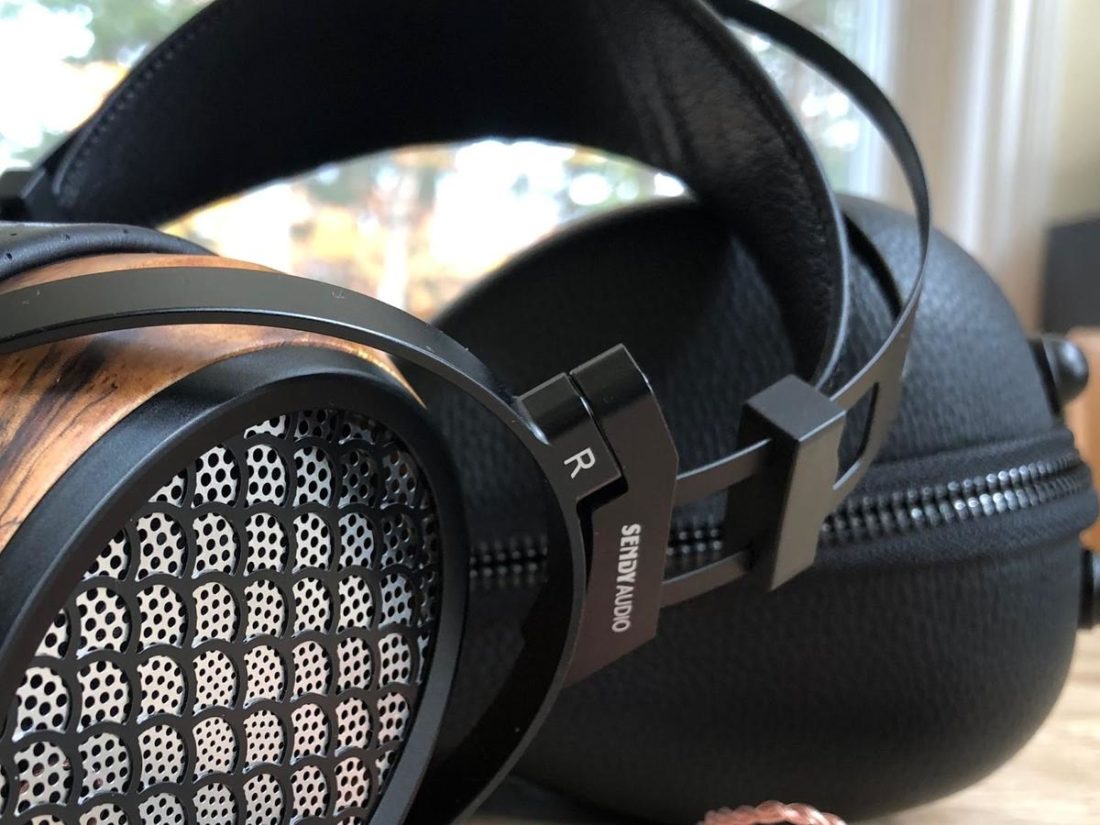
Comfort
Planar magnetic headphones often tip the scales at the higher end of the spectrum. At a listed 420g, the Aiva are clearly not lightweight all-plastic options, but they are significantly lighter than similar wooden-cupped planar models from Audeze. Best of all, the well-designed comfort strap and plush memory foam ear pads offset this weight with ease.
The Aiva feel great on the head and are more than comfortable enough for extended listening sessions.
The oval cups are plenty large enough to contain most ears, but may be slightly shallow for those with more prominent or protruding auricles.
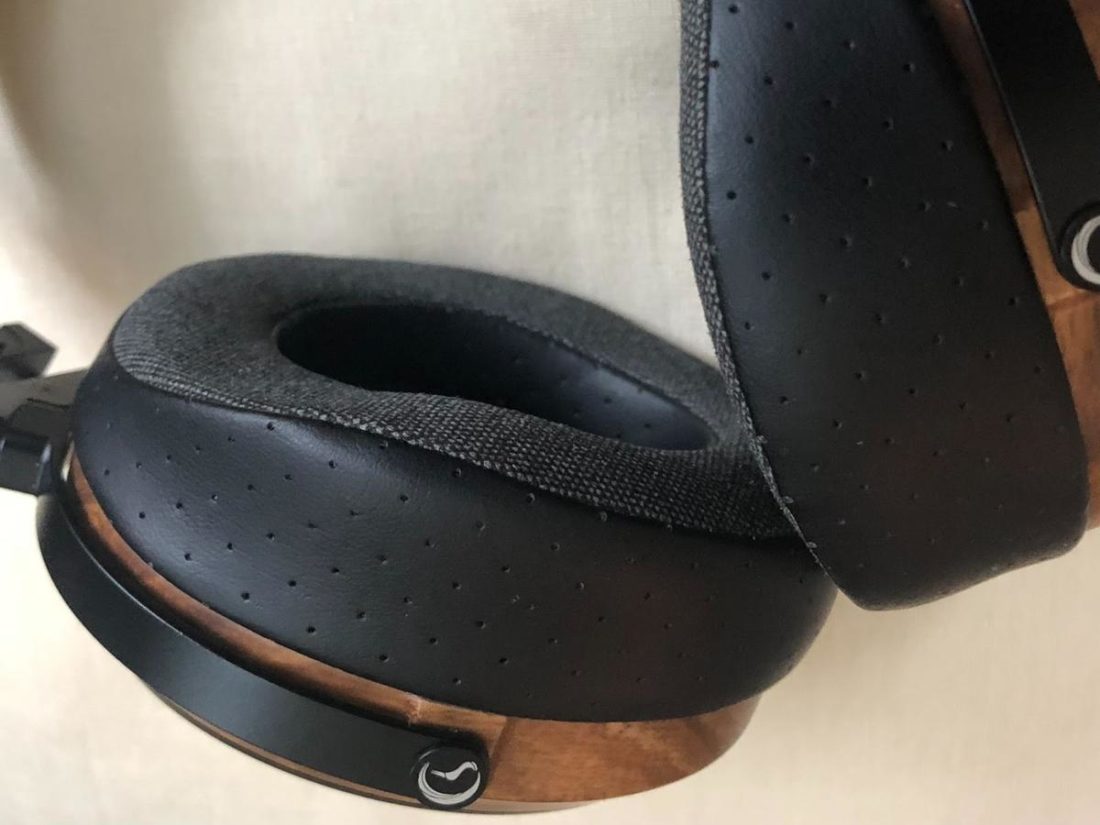
Internals
At the heart of the Aiva are the much-discussed planar drivers, featuring an ultra-thin (0.005mm) German aluminum foil diaphragm and double-sided, push-pull, neodymium (NdFeB) magnetic structure. The drivers sit immediately behind the outer grills and there is no additional dampening material within the wooden cups.
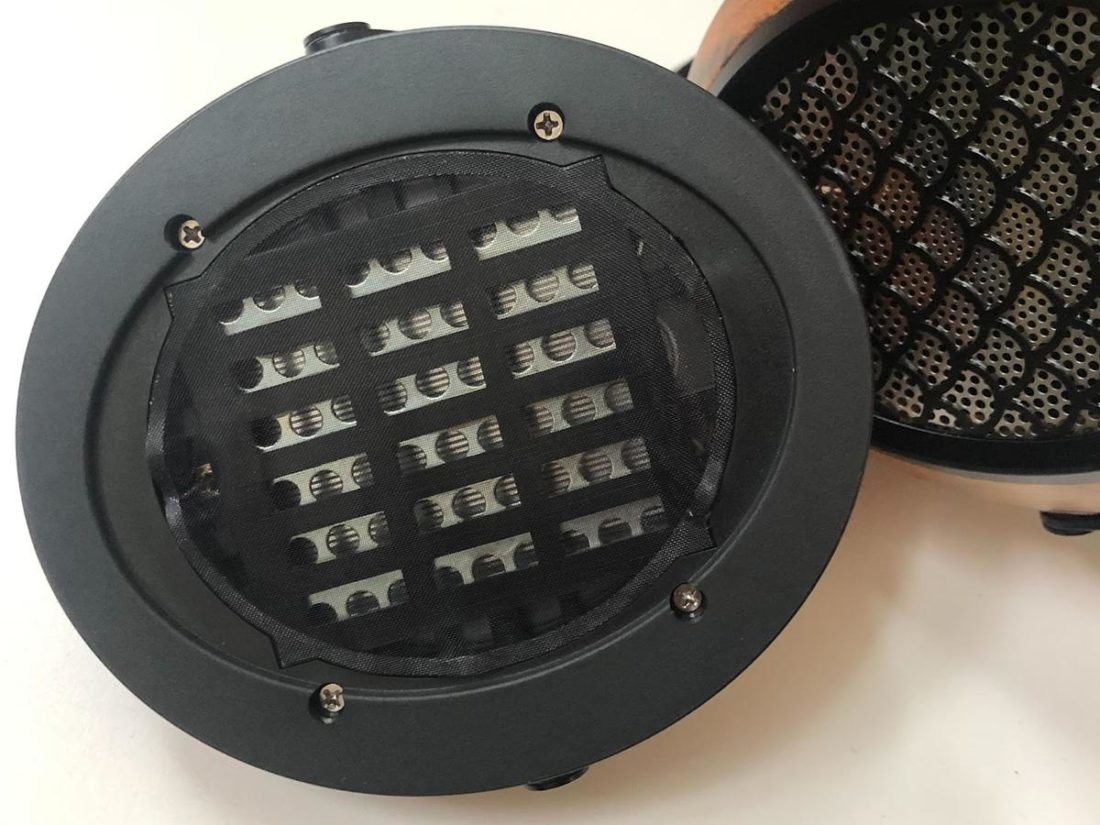
Amplifier Requirements
A big part of the controversy surrounding these headphones likely comes from the somewhat picky requirements for properly powering the Aiva in order to achieve the best sound. While headphones containing planar magnetic drivers often boast fairly moderate appearing amplifier requirements (32 Ohms impedance, 96 dB sensitivity for the Aiva), I’ve found they usually benefit from beefier, higher-current sources. The Aiva are no exception.
Underpowered, the Aiva can tend towards a harsh sound profile and benefit greatly from a powerful and warmer-sounding source with the ability to tightly control the drivers. In this case, I strongly advise avoiding phone dongles, but I do find the Chord Mojo is a decent match for the Aiva.
Overall dynamics are seriously compromised when plugged into a low-power device. This leads to an underwhelming low-end which gets overrun by higher frequency energy. More oomph is required to achieve a balanced and more enjoyable sound signature – think more like 1W+@32Ohms to avoid a somewhat metallic tonality. With sufficient power the overall sound smooths out and becomes far more natural.
At low volumes, the Aiva seem a touch too polite and laid-back, and they can lack impact, while at very higher volume levels, they can become a touch too aggressive. I find there’s a sweet spot where the Aiva really shine. Dynamics and my resulting engagement in the music seem to peak at moderate listening levels.
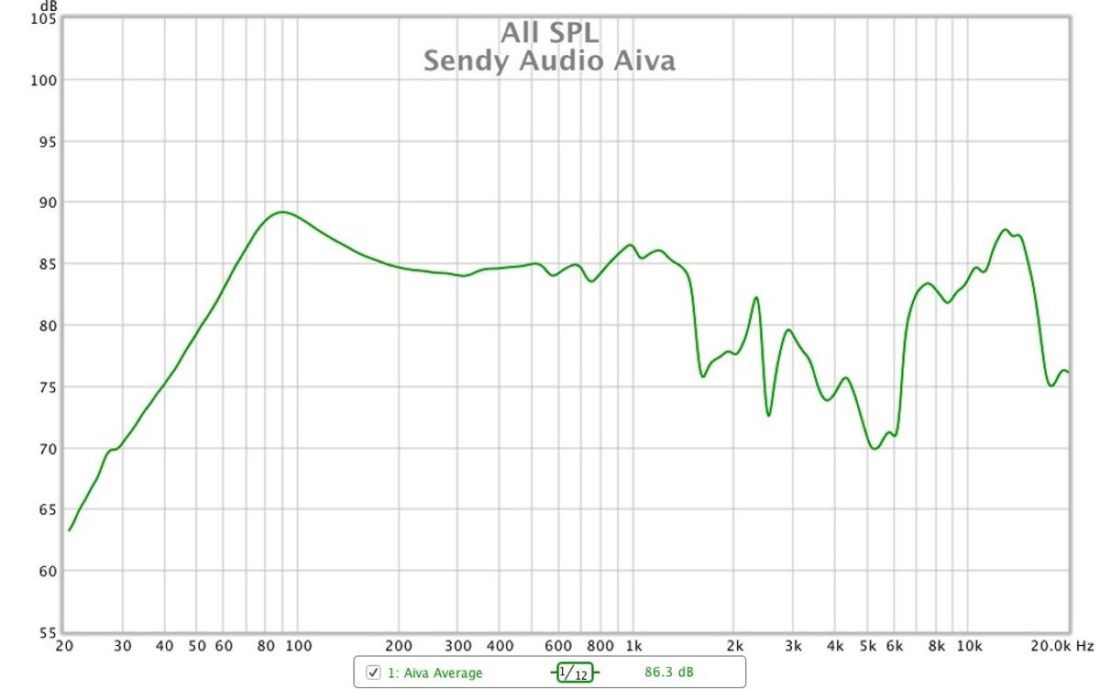
Sendy Audio Aiva Sound
The Aiva have an airy and extended high-end, which gives a transparent and detail-focused sound. This is balanced by quick and punchy mid-bass response, although the low-end takes a back seat to their resolving nature. There is a bit of that planar warmth to the sound, and I wouldn’t describe them as neutral or sterile, however, the overall impression is of a focus on higher-frequency detail.
Textures and nuances are exquisitely rendered. Fine elements in the music pop out.
Again, personal preference and tastes likely contribute to some of the mixed reviews regarding the Aiva. If you want them to sound like established planar magnetic cans on the market, such as Audeze’s offerings, you may be disappointed. They are far from bass-cannons, and they just don’t plumb the subsonic depths. And on the other hand, they aren’t striving for the ultimate in neutrality or accuracy.
Rather, the Aiva have their own distinctive sound. Forward and upper-emphasized, music from the Aiva sounds coherent and fun. The soundstage is neither too small nor overly expanded, and the depth and positioning of instruments and voices in the music seem well-realized.
The Aiva are detail-oriented.
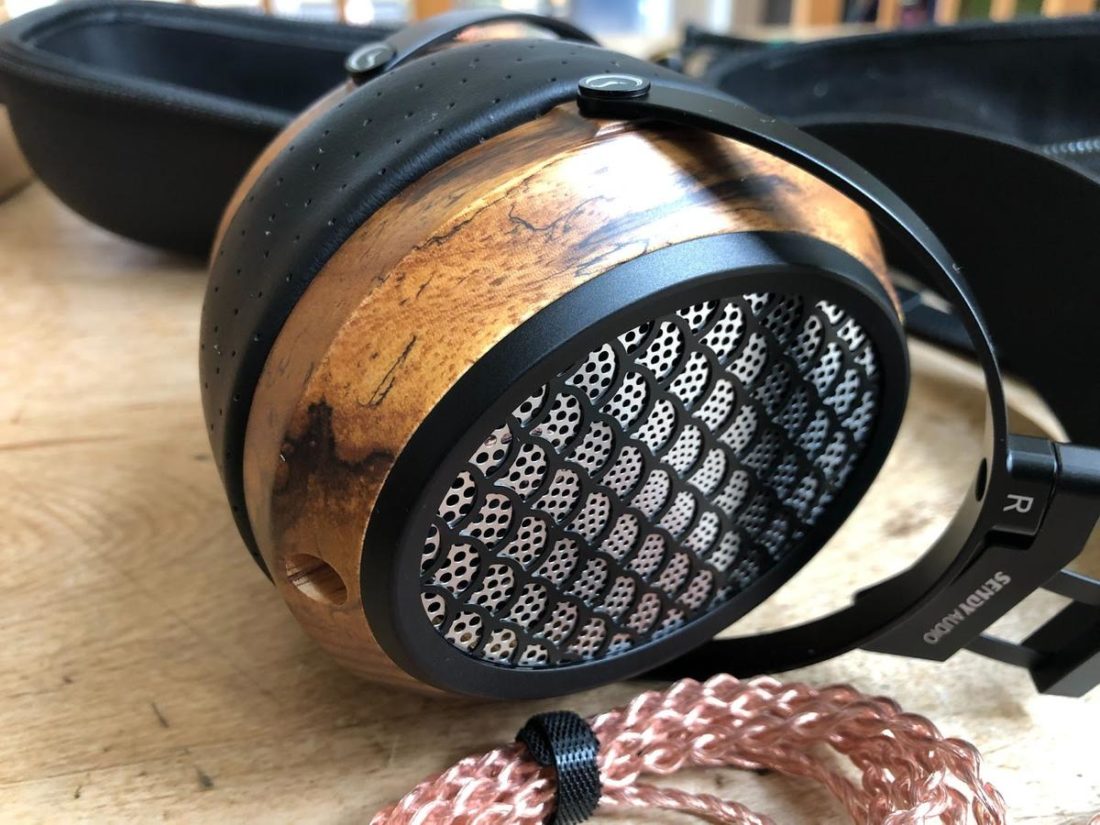
Bass
Mid-bass punch is the name of the game, with somewhat recessed sub-bass performance. As long as you properly amplify them, speed and accuracy are good and the Aiva give the impression of nimble performance. This all adds welcome weight and depth to the music, which is necessary to balance their resolving nature.
Bass notes are well separated and don’t dominate the conversation, but they do impart some warmth to vocals and instruments. Technically, these planar drivers are up to the task of providing clean, accurate, and defined bass presence.
Midrange
I haven’t yet really mentioned the midrange as it isn’t the standout element in the Aiva’s performance. Midrange frequencies are quite linear and just a touch fuller and warmer than absolutely neutral. It’s quite different sounding than the mid-focused abundance of headphones like the Audeze LCD-2, and the Aiva benefits from a warmer source to add some meat to the midrange.
Vocal tones seem clean and are not nasal or boxy, but can come across a touch recessed in the mix. This seems especially true of female voices, which can get pushed a bit further back in the music. It’s a pretty minor complaint, and the overall impression is quite detailed and clear.
Treble
The Aiva treble is quite distinctive. The higher frequencies tend to present with an extended, otherworldly, and airy quality. It’s a bright signature, without being overly fatiguing, and it feels like higher harmonics are at work to add a cool sparkle to the music.
These are a resolving pair of headphones, but they mix in just enough low-end warmth to manage to avoid being cold or lifeless.
This extra treble energy can verge on slightly unnatural or metallic sounding if the Aiva are not being fed from the right audio chain. They aren’t always an ‘easy’ listen, and this in itself can be polarizing. Not everyone is going to appreciate what they’ve got to offer. At the risk of unnecessarily repeating myself, a warm and powerful source is key to getting the most from the Aiva, but nothing is going to fundamentally change their sonic nature.
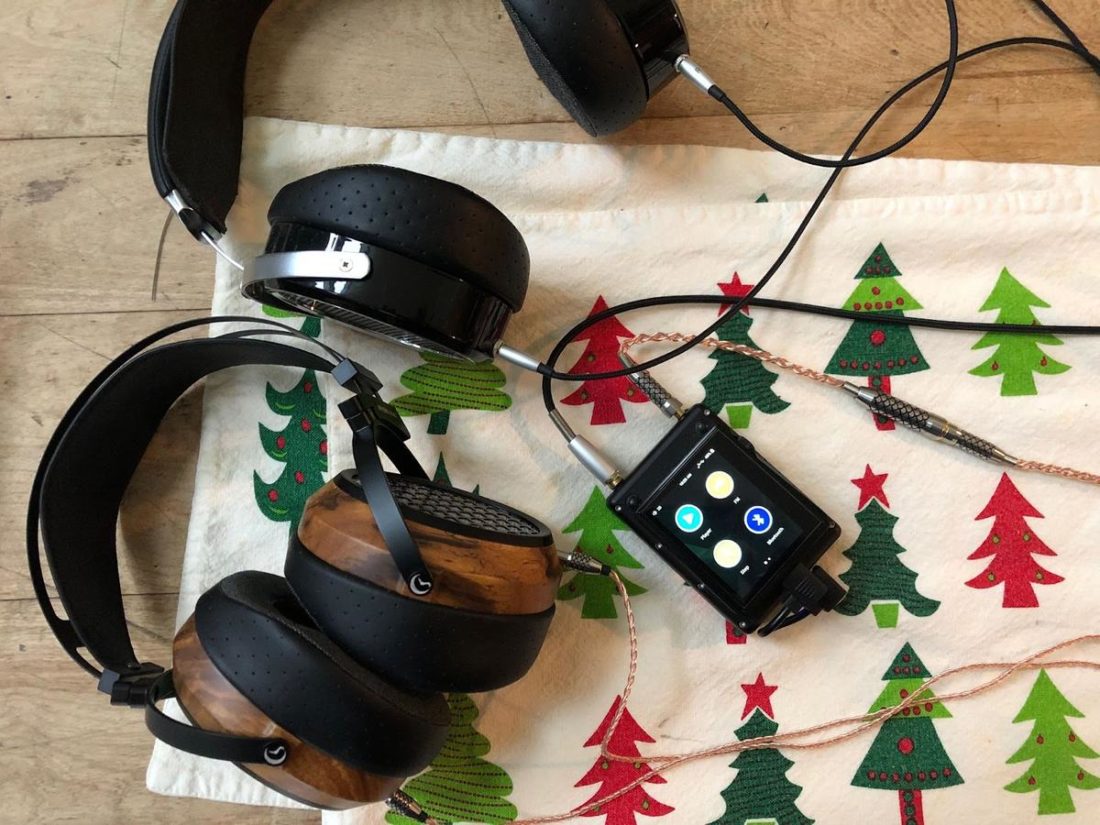
Comparisons
Aiva vs Takstar HF 580 (modified)
The Aiva and the HF 580 share the very same drivers and general cup shape/size, but beyond that, they have little in common physically. The HF 580 cups are made of shiny black and silver plastic, and have a padded band with steel sliders and gimbals. My modified pair weigh in at ±486g. This is quite a difference from the Aiva with far more premium construction and materials weighing almost 75g less (measured at ±413g).
The Aiva feel far lighter on the head and as a result are much more comfortable.
But surely, with identical drivers and pads they are going to sound pretty much the same? Umm, yeah… no. No, they don’t. It turns out that cup tuning and materials have a lot to do with how a pair of headphones sound.
My modified pair of HF 580 dig deeper and have greater low-end presence. They come across a bit blunted in A-B comparisons with the Aiva and have a warmer and more laid-back presentation in contrast to the latter’s more detailed signature. The Aiva sound sharper and more resolving, while the HF 580 tend more towards a relaxed and less analytical presentation. Technical aspects such as speed, soundstage, imaging, etc. are more or less the same between both.
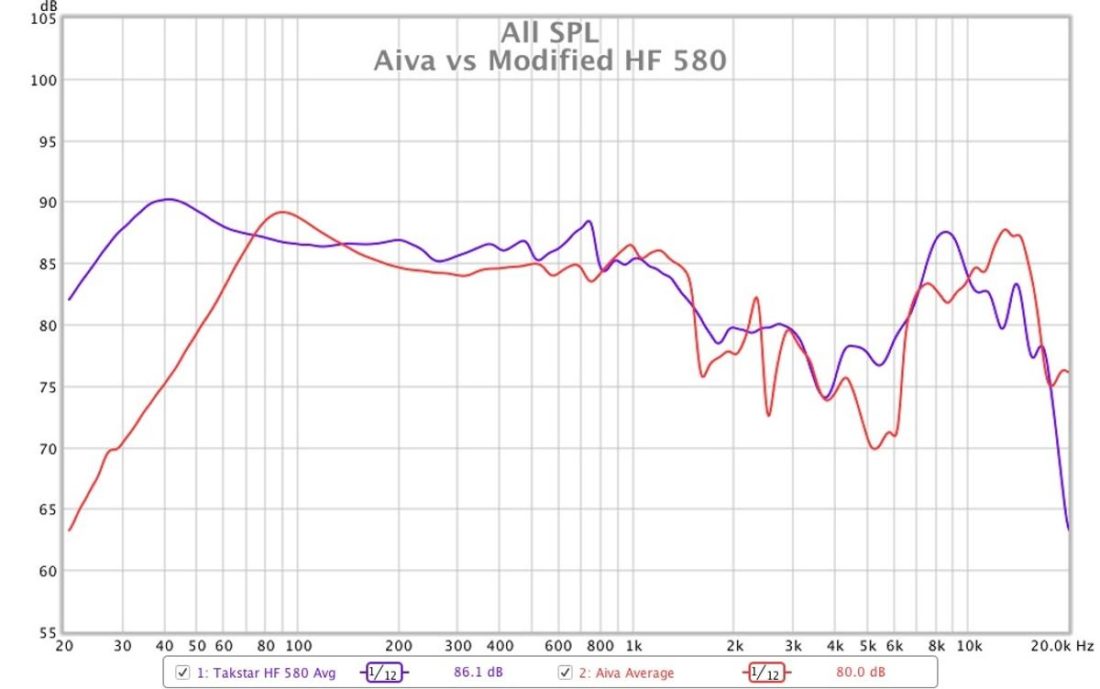
Where to Buy
Conclusion
To those who declare the Aiva anything but a great pair of headphones, I say, “What ineffable twaddle!”
Surely, you’ll be hard pressed to find a better constructed or nicer designed pair of headphones. Full stop. Their exotic looks may not necessarily float your boat, but no one is going to complain about how these things are put together, or about the materials used in their construction. The Aiva spoke to me from the first time I glimpsed pictures online and they more than live up to their beauty shots in person.
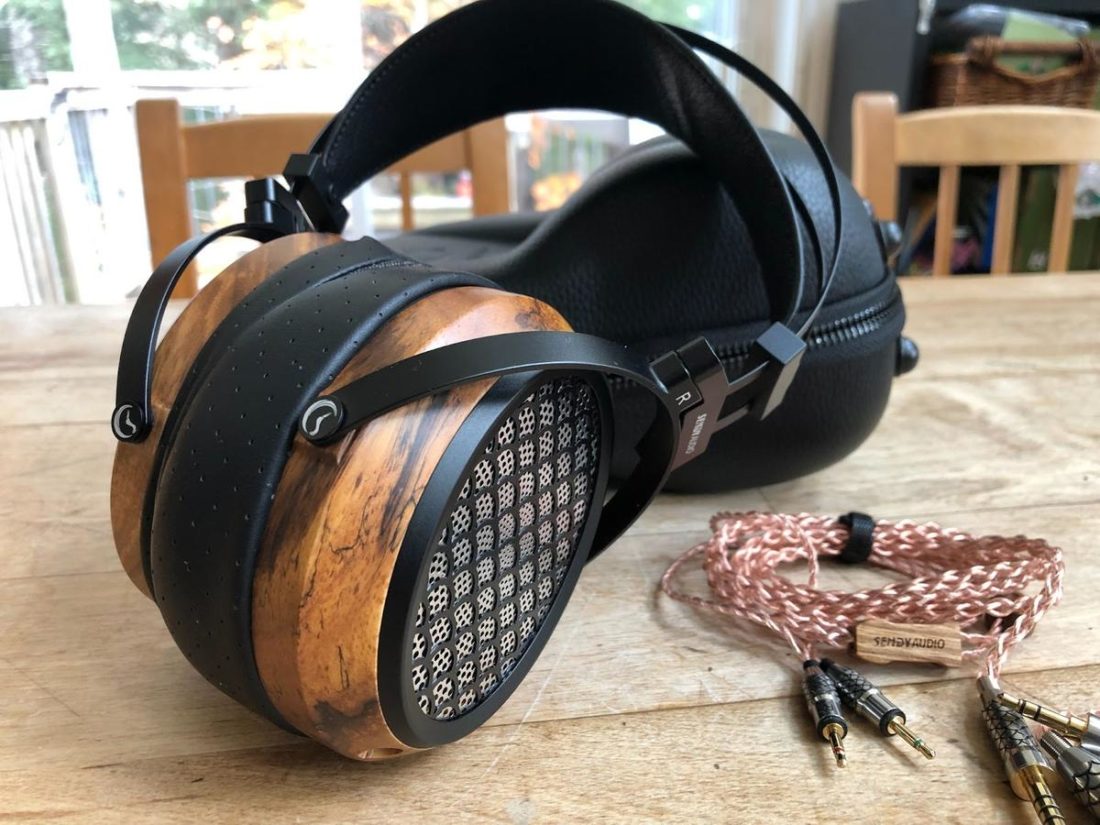
I’m satisfied that we’ve embodied our inner Sherlock Holmes and investigated this case thoroughly. The vital clue as to why some folks may not appreciate the Aiva became apparent when I tried them with the variety of portable and desktop devices that I have on hand.
If you are willing to provide them with a powerful and warm source, the Aiva shine. Pairing their planar drivers with an amp that can control them properly transforms the Aiva into a resolving but balanced and fun-sounding pair of cans. I hesitate to recommend them to anyone unwilling to properly power them, however. Smartphone users sporting average DAC/amp dongles may well be disappointed in what they hear.
The Aiva aren’t perfect, but at their price point they set the high-water standard for design, materials, comfort, and construction. Expectations can be damning; the Aiva don’t sound like other planar magnetic driven headphones that I’ve tried. But, if you are a fan of their own particular take on a detailed presentation anchored by punchy mid-bass, you’ll absolutely love them.

Hi
Great review – how would they work with the AKSR25 Dap? Will there be enough power?
This is what I currently use with my Focal Elegia
Thanks!
Sorry, I’m not sure. I’ve never used that device.
I have always been curious about these. I love the look! With a BF2 feeding a Violectric V220, would these be a good fit? I just can’t let go of mid-fi. 🙂
That amp is Incredible with the iBasso SR2’s.
In this case, I think it’s more a case of your sound preferences than the amp. Lots of power there to run them.